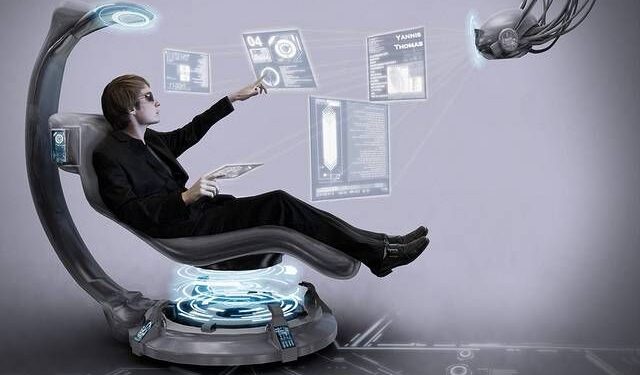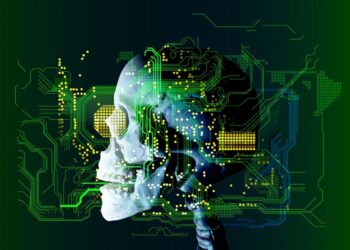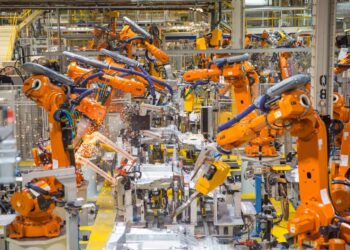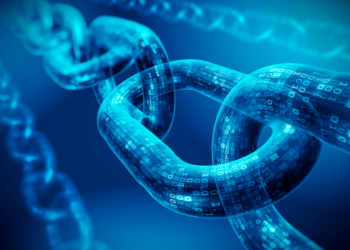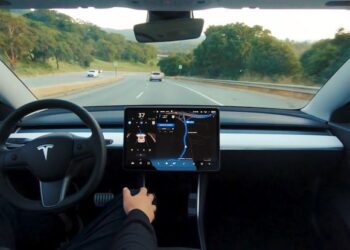These are not just passing trends; they represent fundamental shifts in how we interact with technology, each other, and the world around us. From transformative computing paradigms to deeply integrated interfaces bridging the gap between human biology and advanced machines, these breakthroughs are laying the groundwork for a future that once resided solely in the realm of science fiction.
Yet, as hopeful as this might sound, it’s critical to examine these technologies through a practical lens. Innovations don’t exist in a vacuum; their eventual success hinges on overcoming real-world challenges such as infrastructural complexity, regulatory compliance, market adoption rates, and ethical considerations. If one views technology as a tapestry, then each of these emerging threads must be woven into existing structures without tearing apart what is already there. Only by understanding the strengths, limitations, and long-term potential of each technology can we prepare ourselves for the opportunities and challenges that await.
In this comprehensive exploration, we will delve deep into five key emerging technologies poised to have a significant impact by 2025. Each section will not only highlight what makes these advancements noteworthy but also offer insights into their practical applications, the hurdles they must overcome, and the potential influence they may wield over the next decade. For anyone looking to stay ahead of the curve—be it business leaders aiming to outmaneuver competitors, policymakers seeking to guide innovation responsibly, or curious consumers wanting a glimpse of tomorrow—understanding these technologies is crucial.
Advanced Artificial Intelligence and Machine Learning
Artificial Intelligence (AI) and Machine Learning (ML) are not new concepts. Over the past decade, these technologies have evolved from niche academic interests into mainstream tools that power recommendations, optimize supply chains, and even diagnose diseases. By 2025, the scope of AI and ML will expand further, transcending their current roles to become fully integrated, adaptive, and predictive engines behind numerous aspects of daily life.
- Contextual Understanding and Reasoning
By 2025, next-generation AI will move beyond pattern recognition into a realm of contextual understanding. This means AI models will not just identify objects in an image or parse the grammar in a sentence; they will interpret the deeper meaning behind data inputs.
For example:
A. AI-driven retail platforms could predict seasonal fashion trends based on not only historical sales data but also on emerging cultural nuances.
B. Healthcare diagnostic tools could integrate patient history, environmental factors, and genetic data to suggest personalized treatments.
C. AI-based content moderators on social media could distinguish nuanced forms of hate speech or misinformation, making digital environments safer and more reliable. - Edge AI and IoT Integration
One of the most significant shifts will be the proliferation of AI “at the edge”—meaning computation happens directly on devices rather than relying on cloud servers. This reduces latency, enhances privacy, and improves real-time responsiveness. With the Internet of Things (IoT) devices becoming ubiquitous, synergistic interplay between connected sensors and on-device AI processing is expected.
For example:
A. Smart cameras in traffic systems analyzing congestion without sending raw video feeds to distant data centers.
B. Wearable health monitors providing immediate feedback on activity levels, heart rate irregularities, or environmental toxins.
C. Industrial robots optimizing manufacturing processes on the fly to reduce waste and improve safety. - Ethical AI and Regulatory Frameworks
As AI grows more potent, the call for stronger ethical guidelines and legislative frameworks intensifies. By 2025, expect nations and global institutions to draft comprehensive standards for AI fairness, transparency, accountability, and data privacy.
For example:
A. AI audits ensuring algorithms don’t discriminate in hiring processes.
B. Clear data management policies holding companies accountable for protecting user information.
C. Continuous oversight bodies monitoring AI applications in critical sectors like healthcare, finance, and law enforcement. - Enhanced Natural Language Processing and Understanding
The leap in language-based AI will make conversational agents less robotic and more human-like, enabling them to understand context, emotion, and cultural cues. Multilingual chatbots could seamlessly interact with users across the globe, making customer service and support more accessible.
For example:
A. Virtual assistants that not only answer queries but also anticipate user needs based on prior interactions.
B. AI systems that understand idiomatic expressions and metaphors, making human-computer communication more intuitive.
C. Automated translation tools delivering near-instantaneous, culturally aware translations that bridge language barriers.
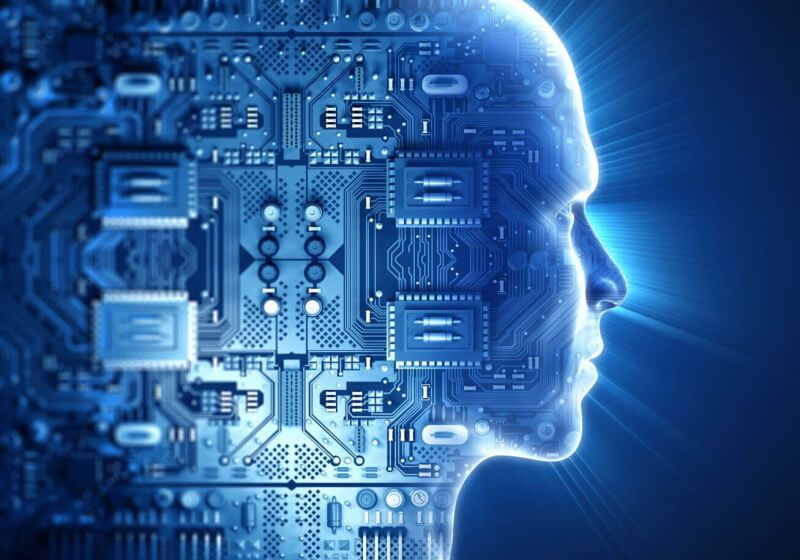
Quantum Computing
Quantum computing marks a radical departure from classical computing paradigms. While classical computers rely on bits to represent data as 0s and 1s, quantum computers use qubits that can exist in superpositions, unlocking exponential growth in computational power for specific problems. Although still in its infancy, by 2025, quantum computing will likely make significant strides, moving from laboratory demonstrations to real-world pilot projects tackling complex challenges.
- Breakthroughs in Material Science and Drug Discovery
Quantum computing has the potential to simulate molecular structures at an unparalleled level of detail, accelerating material design, energy storage research, and pharmaceutical development.
For example:
A. Designing new materials for batteries that store more energy and charge faster.
B. Developing more effective cancer-fighting drugs by simulating molecular interactions.
C. Inventing more efficient solar cells by modeling light absorption at a quantum level. - Financial Modeling and Risk Analysis
The financial sector often grapples with complex mathematical models to evaluate risk, forecast market trends, and price derivatives. Quantum algorithms could process enormous datasets to deliver insights more quickly and accurately than ever before.
For example:
A. Quantum-enhanced Monte Carlo simulations providing more accurate financial risk assessments.
B. Optimizing trading strategies by rapidly analyzing patterns across global markets.
C. Improving fraud detection by uncovering hidden correlations too subtle for classical systems. - Cryptography and Security
Quantum computing presents a dual-edged sword for cybersecurity. On one hand, quantum algorithms might break current encryption methods. On the other, quantum-safe cryptography aims to protect data against future quantum attacks. By 2025, organizations will likely begin implementing post-quantum cryptographic protocols.
For example:
A. Banks upgrading encryption methods to resist quantum decryption attempts.
B. Governments funding research into quantum-safe keys to secure critical infrastructure.
C. Technology firms offering quantum-resistant VPNs to ensure long-term data protection. - Quantum Cloud Services and Tools
As quantum computers remain expensive and specialized, cloud-based quantum computing services will allow businesses and researchers to access quantum resources remotely. This democratization will accelerate learning, experimentation, and application development.
For example:
A. Startups leasing quantum computing time from major providers to develop new algorithms.
B. Universities integrating quantum cloud access into their curricula, training the next generation of experts.
C. Enterprises running hybrid classical-quantum workloads for optimization problems like logistics and supply chain management. - Challenges and Standardization
Despite its promise, quantum computing must overcome challenges related to error correction, qubit stability, and cooling requirements. By 2025, progress in these areas will be evident but incomplete, pushing the industry to develop standardized best practices and frameworks for building and using quantum computers reliably.
For example:
A. Improved error-correcting codes that maintain qubit integrity over longer computational runs.
B. More robust qubit designs that tolerate environmental noise.
C. Collaborative industry groups working on unified standards for quantum programming languages and interfaces.
Brain-Computer Interfaces (BCIs)
The concept of directly connecting the human brain to computing systems was once the stuff of speculative fiction. By 2025, that speculation will inch closer to reality. Brain-Computer Interfaces (BCIs) involve measuring and interpreting neural signals, allowing machines to respond to our thoughts, intentions, or mental states. The resulting synergy could revolutionize assistive technology, gaming, healthcare, and even communication.
- Medical and Therapeutic Applications
BCIs show immense promise in helping individuals with disabilities regain lost functions. By translating neural signals into actions, BCIs can enable people to control prosthetic limbs, communicate through text or speech synthesis, and potentially restore senses.
For example:
A. Patients with paralysis using BCIs to operate wheelchairs or robotic arms.
B. Individuals with speech impairments producing synthesized speech controlled by their neural activity.
C. Researchers exploring methods to restore partial vision or hearing through direct neural stimulation. - Cognitive Enhancement and Education
Beyond therapeutic uses, BCIs could help enhance cognitive performance. By understanding brainwave patterns associated with focus, memory, and learning, BCIs might tailor educational content or training programs. This customization could improve knowledge retention and skill acquisition.
For example:
A. Personalized language learning tools adjusting difficulty based on a learner’s attention level.
B. Professional training simulations adapting scenarios in real-time as the user’s stress or confusion signals fluctuate.
C. Memory-enhancing BCIs assisting older adults in retaining vital information more efficiently. - Gaming and Immersive Experiences
The gaming and entertainment industries may see a drastic transformation. Imagine playing a video game where your character’s actions are guided not by a keyboard or controller, but by your thoughts. Virtual reality (VR) and augmented reality (AR) environments would become more immersive, allowing users to interact naturally and intuitively with digital worlds.
For example:
A. VR experiences where users navigate worlds by focusing their attention on objectives.
B. Collaborative multiplayer games where team strategies evolve based on shared neural cues.
C. Interactive storytelling experiences adapting narratives based on the player’s emotional state. - Ethical and Privacy Considerations
With access to neural data comes serious concerns about privacy, consent, and potential misuse. By 2025, policymakers and advocacy groups will be wrestling with questions about data ownership, the right to “cognitive liberty,” and how to ensure BCIs remain tools for empowerment rather than control.
For example:
A. Regulations requiring explicit consent before any neural data is recorded or analyzed.
B. Guidelines ensuring that BCI-based decision-making doesn’t become a requirement for employment.
C. Ethical frameworks preventing the commodification of brain signals for marketing or propaganda. - Overcoming Technical Hurdles
BCIs must refine signal accuracy, reduce invasiveness, and improve long-term reliability. Non-invasive methods like electroencephalography (EEG) caps will gain higher fidelity, while research into implantable devices will focus on safety and biocompatibility. Over time, this progress will make BCIs both more accessible and more robust.
For example:
A. Improved signal processing algorithms filtering out noise from brain signals.
B. Ultra-thin implants made from biocompatible materials reducing immune responses.
C. Wireless connectivity eliminating cumbersome cables and increasing user comfort.
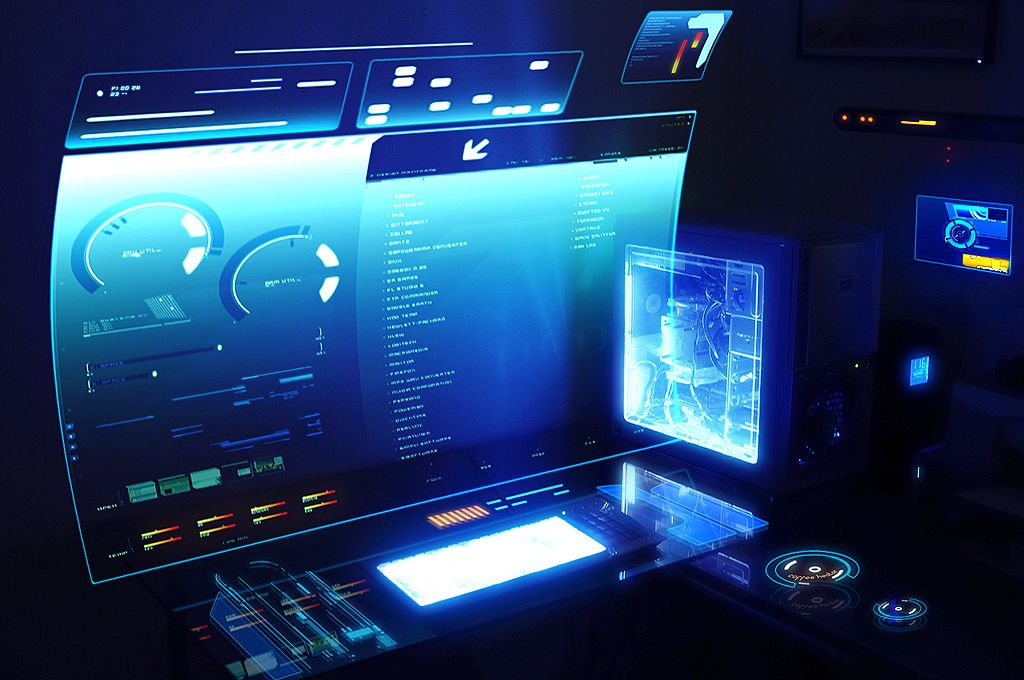
Advanced Robotics and Autonomous Systems
Robots have long existed in controlled industrial environments, performing repetitive tasks like welding or assembly. However, by 2025, robotics will extend beyond these domains into everyday spaces, assisted by sophisticated AI, improved sensors, and enhanced actuators that grant them more dexterity, adaptability, and collaboration capabilities.
- Service Robotics and Personal Assistants
Robots are poised to enter homes, hospitals, and public spaces as service assistants. They will assist in elder care, perform tasks in hazardous environments, and handle mundane chores, freeing humans to focus on more creative and strategic endeavors.
For example:
A. Domestic robots cleaning and organizing living spaces with minimal supervision.
B. Hospital robots delivering medication, disinfecting rooms, and providing mobility assistance to patients.
C. Maintenance bots inspecting infrastructure like bridges or pipelines to detect issues before they escalate. - Agricultural and Environmental Robotics
With a growing global population and strained environmental resources, robots can improve agricultural productivity and sustainability. They will help with tasks like planting, harvesting, and weeding, reducing chemical use and labor costs, as well as monitoring ecosystems to aid conservation efforts.
For example:
A. Crop-monitoring drones equipped with AI identifying pest infestations early.
B. Autonomous tractors efficiently planting seeds with centimeter-level accuracy.
C. Underwater robots assessing coral reef health and guiding restoration efforts. - Logistics and Supply Chain Automation
The logistics sector will increasingly rely on robotic automation in warehouses, ports, and distribution centers. Robots and autonomous vehicles, combined with AI-driven management systems, will streamline operations, reduce errors, and speed up delivery times.
For example:
A. Autonomous forklifts navigating warehouses to pick and place goods.
B. Drones delivering packages to remote locations without human intervention.
C. Robotic sorters organizing parcels based on destination, cutting processing times dramatically. - Human-Robot Collaboration
Moving beyond isolated operation, human-robot collaboration will become more natural. Robots will work alongside human coworkers, assisting with heavy lifting, precision tasks, or repetitive actions. Safety features—like force sensors and computer vision—will ensure robots can detect human presence and react accordingly.
For example:
A. Exoskeletons assisting warehouse workers in lifting heavy objects without strain.
B. Robotic arms on factory floors adjusting movements based on human signals.
C. Construction robots following human instructions to position materials at a site. - Regulation, Safety, and Labor Implications
The widespread adoption of robotics will raise questions about job displacement, labor policies, and safety standards. By 2025, expect regulatory bodies to define guidelines ensuring that human workers can reskill or transition smoothly and that robots adhere to stringent safety protocols.
For example:
A. Legislation mandating robot inspection and certification to prevent accidents.
B. Government-sponsored retraining programs helping workers adapt to a more automated environment.
C. Ethical frameworks ensuring that robots augment rather than replace human creativity and decision-making.
Energy Innovations: Solid-State Batteries and Wireless Power Transfer
While digital technologies grab most headlines, energy storage and delivery advancements are equally critical. Solid-state batteries promise safer, more efficient energy storage, while wireless power transfer is on the cusp of making cords and cables obsolete. By 2025, these technologies could transform personal electronics, electric vehicles, and even how we power smart cities.
- Solid-State Batteries
Unlike traditional lithium-ion batteries that use liquid electrolytes, solid-state batteries rely on solid electrolytes. This innovation increases energy density, reduces charging times, and lowers the risk of leaks or explosions.
For example:
A. Electric vehicles (EVs) traveling significantly longer distances per charge.
B. Smartphones and laptops lasting days between charges and recharging within minutes.
C. Renewable energy storage systems holding wind and solar power more efficiently, stabilizing the grid. - Wireless Charging Infrastructure
Wireless power transfer allows devices to receive energy from a transmitter without direct contact. By 2025, wireless charging pads, embedded furniture chargers, and even large-scale solutions for EVs at rest stops could become commonplace.
For example:
A. Public transport stations where buses and taxis recharge wirelessly during waiting periods.
B. Smart home setups enabling smartphones, wearables, and small appliances to charge automatically without plugging in.
C. Industrial robots recharging while in motion, increasing operational uptime. - Reduced Environmental Impact
More efficient energy storage and distribution contribute to sustainability. Solid-state batteries using more abundant materials and safer chemistries reduce environmental harm. Wireless charging reduces waste by minimizing the need for disposable cables and connectors. Together, these technologies support global efforts to reduce carbon footprints and resource depletion.
For example:
A. EV fleets powered by greener batteries easing reliance on fossil fuels.
B. Energy grids relying on stable, compact storage solutions to integrate renewables seamlessly.
C. Electronic devices designed to last longer due to more reliable and durable battery technology. - Regulatory and Technical Hurdles
Widespread adoption depends on overcoming cost barriers, developing compatible standards, and ensuring safety. Solid-state batteries must become affordable at scale, while wireless power systems need standardized protocols to prevent interference and ensure efficient power transfer.
For example:
A. Collaboration among industry leaders to develop universal wireless charging standards.
B. Safety certifications ensuring that wireless power fields don’t harm users or interfere with medical devices.
C. Public incentives encouraging EV adoption and the installation of wireless charging infrastructure. - Integration with Smart Grids and IoT
By 2025, energy storage and transfer technologies will integrate closely with IoT devices and smart grids. Intelligent energy management systems will route power where it’s needed most, reducing waste and optimizing performance.
For example:
A. Smart thermostats adjusting HVAC systems to balance energy usage throughout the day.
B. Autonomous drones deploying to repair power lines, guided by data from wireless sensors.
C. Home energy systems automatically balancing solar, battery, and grid power for maximum efficiency.
Conclusion
By 2025, the five emerging technologies discussed—Advanced AI and ML, Quantum Computing, Brain-Computer Interfaces, Advanced Robotics, and Next-Generation Energy Solutions—will be more than just buzzwords. They will represent tangible innovations reshaping industries, creating new markets, and influencing how we live, work, learn, and play. Each of these breakthroughs converges with the others, forming a complex interplay of new capabilities. AI informs robotics; quantum computing speeds up complex problem-solving; BCIs bridge human cognition and digital realms; new energy solutions power them all sustainably.
However, the road ahead is not without challenges. Ethical dilemmas, privacy concerns, cybersecurity threats, and the risk of job displacement must be addressed proactively. Regulatory frameworks, education reforms, and international collaboration will be paramount in ensuring these technologies benefit humanity as a whole. The conversation must include all stakeholders—from technologists and policymakers to consumers and communities—so that the future we build is one of equitable progress rather than unintended consequences.
For businesses, keeping an eye on these trends will be crucial to maintaining competitiveness. For policymakers, understanding the nuances of these technologies will aid in crafting forward-looking legislation. For the average person, staying informed means being prepared for a world where technology intertwines with everyday life in ways previously unimaginable.

